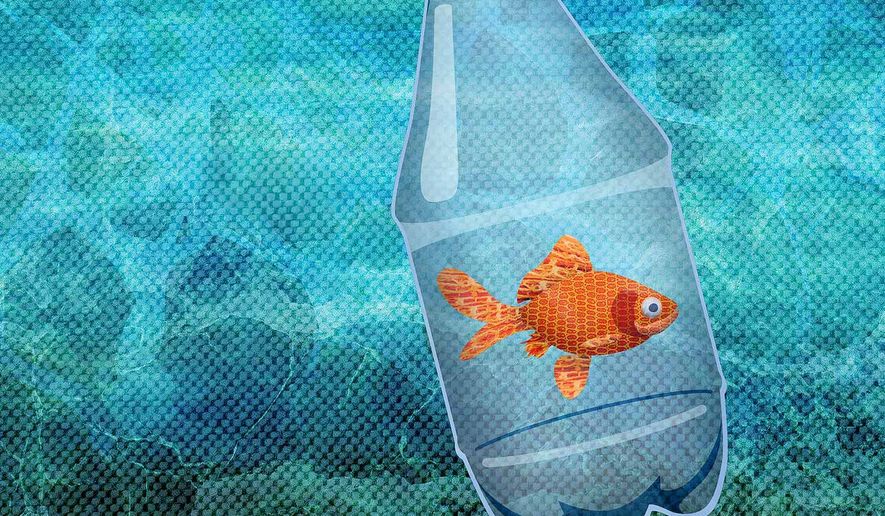OPINION:
The noise surrounding plastic pollution has been driven by wacky activists who can always be counted on to have radical ideas for addressing any problem. But Secretary of State Antony Blinken’s recent announcement that the U.S. is planning to endorse a UN treaty on plastic pollution shows that sensible policy solutions may be taking center stage.
The details of this treaty will remain sparse until meetings take place in February. However, there is reason to believe that the planet is heading toward a common-sense approach to reduce plastic pollution without symbolic policies such as bans on plastic straws.
The UN Environmental Assembly is poised to address plastic pollution by targeting two main problems: Inadequate waste management systems in developing countries and poor recycling rates worldwide.
Reducing pollution in the developing world will be key. The ocean is the epicenter of the plastic pollution debate, but it is swirling in misinformation. A viral video of a turtle with a straw in its nose left many thinking straws from American drinks were the most significant problem the ocean faced. But in reality, the Great Pacific Garbage Patch, a Texas-sized mass of trash floating near Hawaii, consists mostly of abandoned fishing gear, according to National Geographic.
For all of our introspection, the U.S. does a good job with waste, according to researchers. Only roughly one percent of the mismanaged trash in the ocean comes from the United States. Almost all plastic in the ocean can be traced back to 10 rivers in Africa and Asia. If keeping plastic out of the ocean is the goal, improving waste management in developing countries has to be part of the solution.
Recycling is another problem that must be addressed globally. American plastic is not flowing into the oceans, but it is piling up in landfills when it could be flowing through recycling centers.
The U.S. has a dismal 9% recycling rate for all plastic. However, some plastic products are recycled at much higher rates. Plastics numbered 1 and 2, used in water bottles and milk jugs, are recycled at a roughly 30% rate. That’s about on par with our overall recycling rate across all materials, which is 32%. When those containers are turned into new ones, demonizing them as “single-use” products is a stretch. But 32% is too low. Germany recycles at a rate of 67%. One of our problems is a very confusing recycling system that has little logic.
All plastics feature a chasing arrows recycling logo with a number 1 through 7. But those numbers have little to do with recyclability. Most recycling centers only keep plastics numbered 1, 2, and, increasingly, 5. But the other plastics still feature the chasing arrow logo. This creates a sorting and new trash problem at recycling centers. We need to stop putting foam takeout containers or PVC products in recycling bins.
But there is reason to be optimistic.
Innovation continues. Developments in chemical recycling make it a possibility that all plastics will be recycled into high-grade plastic. And researchers are finding fascinating uses for recycled plastic, including in road pavement.
Blinken announced that the U.S. would continue advancements through additional funding. He noted that the U.S. is already “investing millions of dollars of research in national labs, universities, and industry to make leaps in areas such as developing new plastics that are recyclable by design.”
For years, anti-plastic activists have wasted time pursuing worthless initiatives. They’ve spent more time focused on straw bans than calling out China for dumping plastic straight into the ocean. Instead of promoting recycling or advocating for a simplified recycling system, they’ve questioned whether it’s worth the effort. Some treat all single-use plastics as though they have no value, ignoring that water bottles are essential during natural disasters, syringes and gloves are needed during pandemics, and hygiene products like diapers and tampons keep people healthy.
Plastic pollution is a global problem; it needs a global solution. Prioritizing waste management and improved recycling is that solution.
• Richard Berman is president of Berman and Co. in Washington, D.C.




Please read our comment policy before commenting.